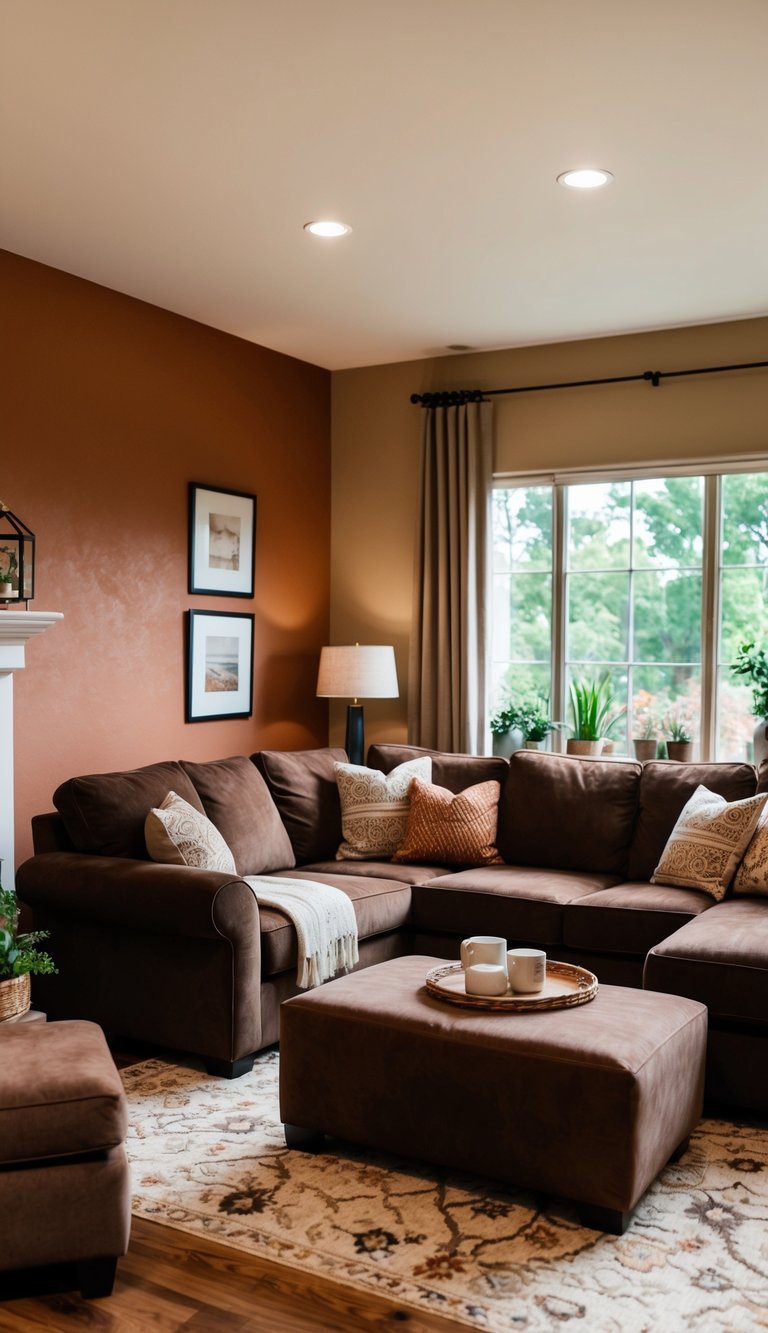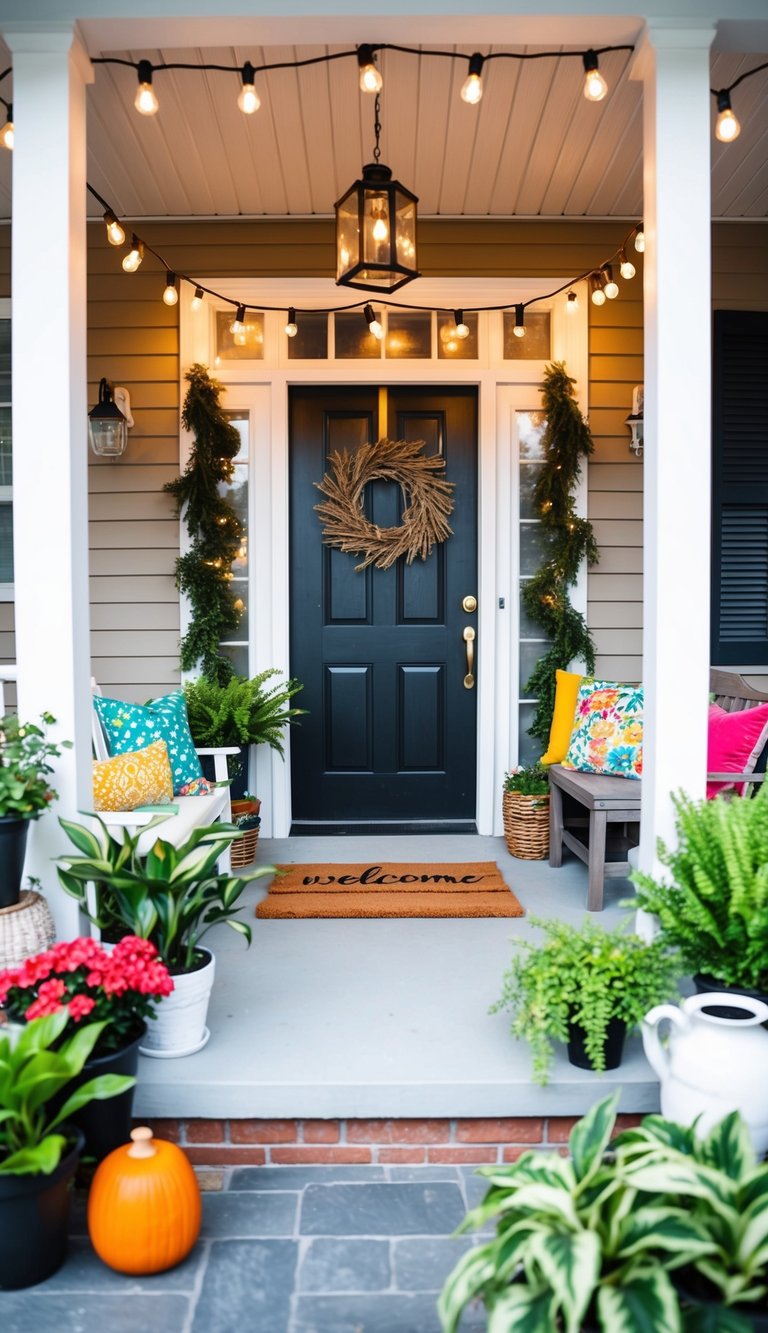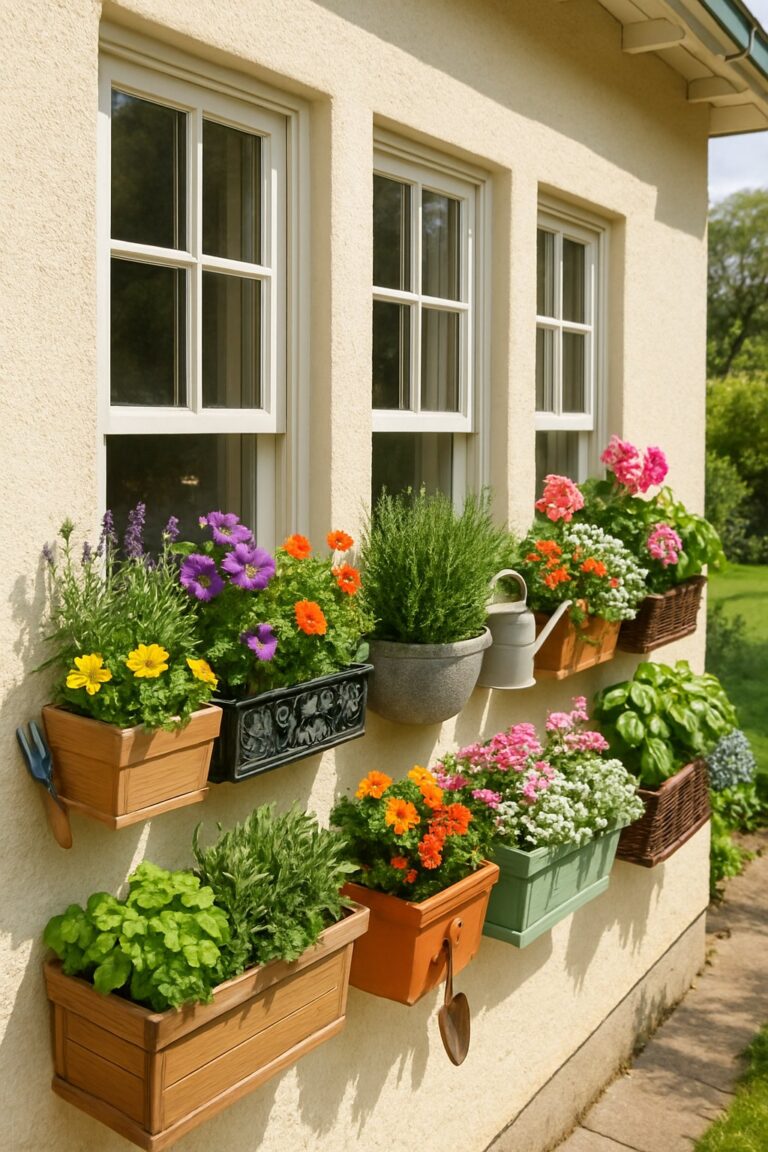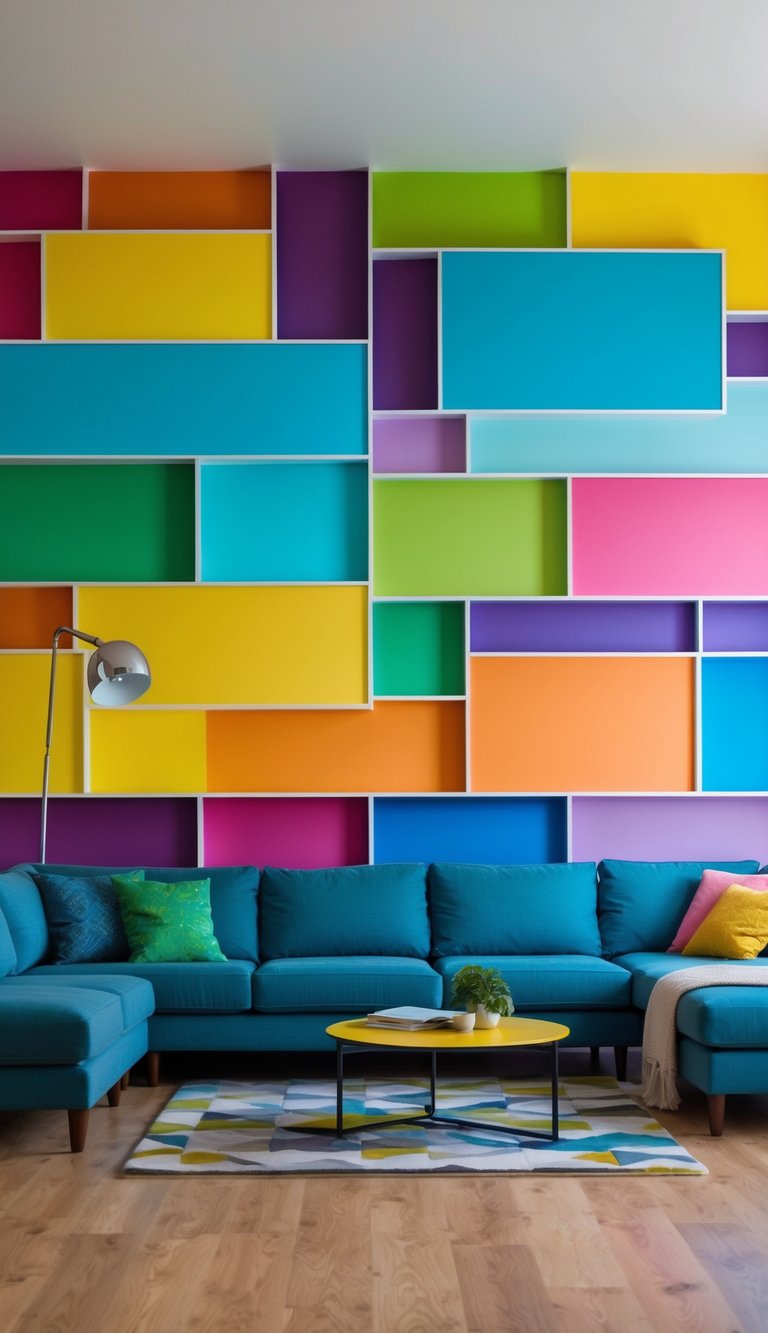Feeling comfortable and secure in your own backyard is important. Whether you’re enjoying a quiet morning coffee or relaxing with your family, having a sense of privacy can make these moments more peaceful and enjoyable.
This article gathers 7 backyard privacy ideas from neighbors, giving you simple ways to create a space that feels truly your own. If your neighbors are close by or your yard is more open, you’ll find gentle solutions here to help you feel safe and at ease.
1) Plant tall evergreen hedges like arborvitae for year-round privacy.
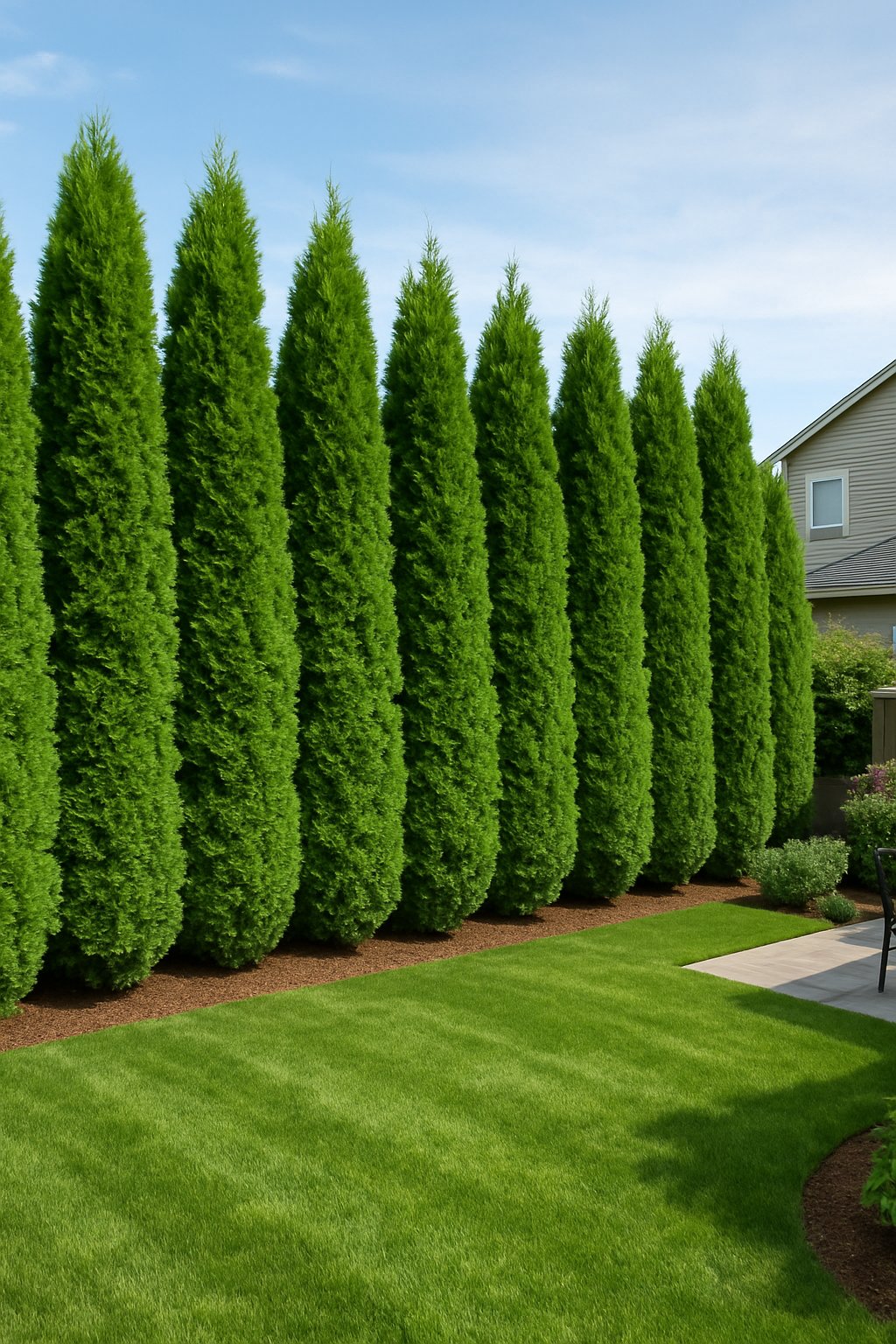
If you want a simple way to make your backyard feel more private, tall evergreen hedges are a good option. Plants like arborvitae keep their green leaves all year. This means you always have a “living wall” that doesn’t lose its cover in the winter.
Arborvitae are known for being tall and slender, so they don’t take up much space. They can grow several feet each year, making them one of the faster options for privacy. For smaller yards, look for varieties that stay narrow and fit close to your fence.
Once they’re established, these hedges need little care. They only need some watering during dry spells and a trim once a year. You won’t have to spend hours on maintenance.
Evergreens like arborvitae also help block noise and wind. Your yard can feel more peaceful and cozy. It can be nice to sit outside and enjoy the view, knowing you don’t have to worry about prying eyes.
2) Use wooden privacy screens with staggered boards to block views gently.

Wooden privacy screens with staggered boards are an easy way to add privacy to your yard. The boards are arranged at different heights and depths, which helps block views without making the space feel closed in.
These screens can offer privacy while still letting in natural light and airflow. You can place them around a patio, deck, or sitting area where you want more seclusion from neighbors.
Choosing a wood that matches your outdoor space can also make your yard feel more inviting. Many people like natural finishes, but you can also paint or stain the wood to suit your style.
Installing these screens is often a project that you or a family member can do yourselves. If you need, you can ask for help from a handy friend. Just be sure to use sturdy materials for safety and longer-lasting results.
Wooden screens are a gentle way to create peaceful moments in your backyard. They provide privacy while keeping the area open and comfortable, so you can enjoy time outside with confidence.
3) Install shade sails over seating areas to create a cozy, shielded spot.

Adding a shade sail over your patio or seating area gives you extra comfort and privacy. Shade sails are simple fabric panels that stretch between posts, your fence, or your house. They help block sunlight and shield you from your neighbor’s view at the same time.
You can choose different colors or shapes to fit your space. Many shade sails are easy to install yourself with basic tools, and you don’t need much help. Some people use strong aluminum poles with umbrella stands, then secure the sails to a railing or a wall.
Shade sails create a more inviting place to sit and relax outside. They make a gentle barrier above you, so you feel more protected—like having a roof, but with a soft touch. Even a small shade sail can help you enjoy being outdoors with a little more peace and quiet.
If your space gets a lot of sun, this is a good way to stay cool, too. Just be sure the sails are tight and secure for safety, especially on windy days. Done well, a shade sail helps your backyard feel like your own private retreat.
4) Add climbing vines on trellises to soften fences and add greenery.
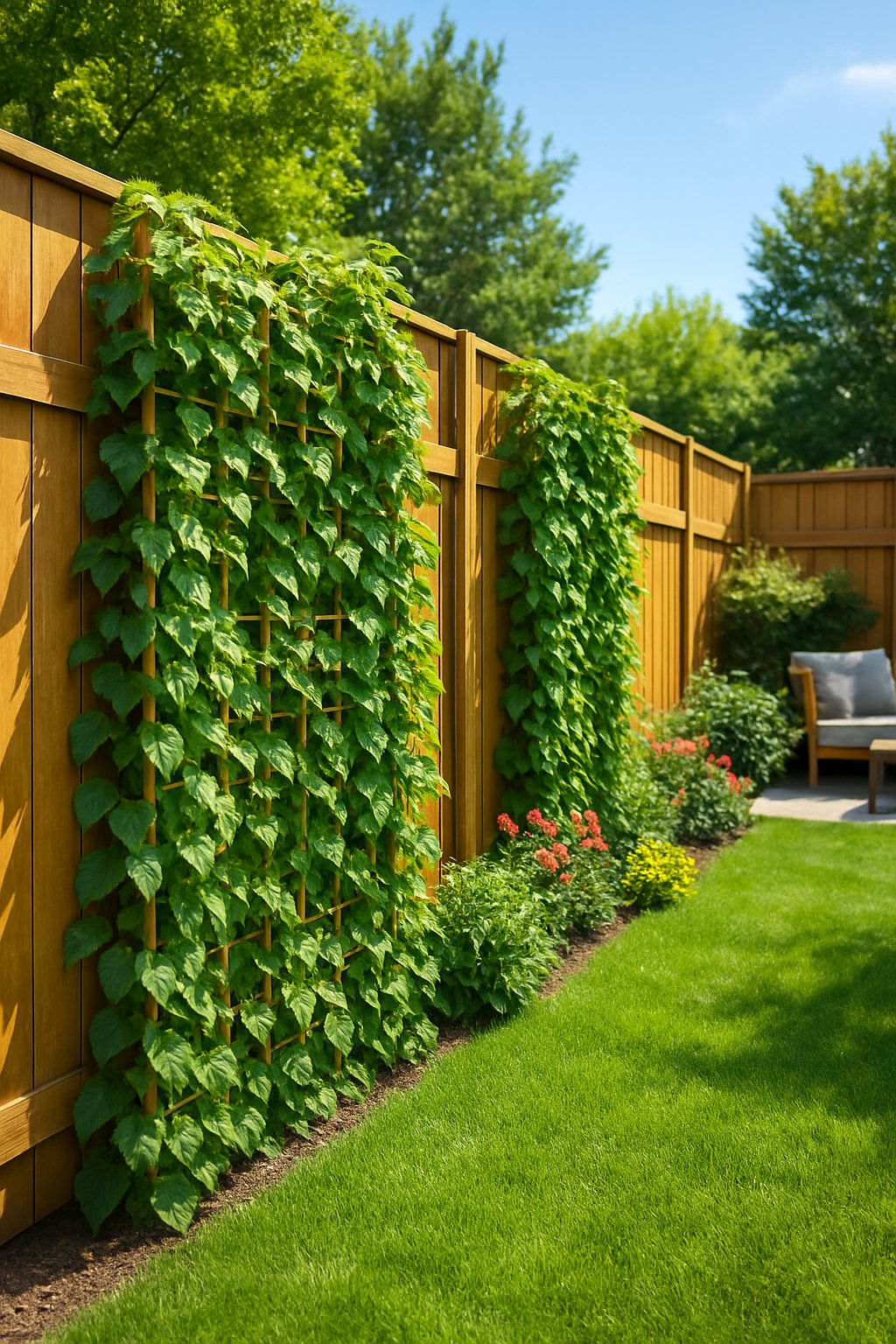
Using trellises with climbing vines is a gentle way to make your backyard feel more private. You can add a trellis to an existing fence or set it up as a stand-alone feature. The vines will grow over time, filling in gaps and creating a natural screen.
Choosing the right vine is important. Some options, like ivy, climbing hydrangea, or clematis, are easy to grow and provide lots of green coverage. Many seniors find these plants need little maintenance once they are established.
A trellis covered with vines does more than block views; it also softens hard edges and brings color and life into your space. This can help your yard feel calmer and more inviting.
Setting up a trellis is straightforward, and you can find small or large styles to fit your needs. If reaching to water or trim the plants is difficult, you can ask a loved one or hire a helper. With some care, you’ll have a soft, green privacy screen that adds to your comfort and peace of mind.
5) Create a border garden with layered shrubs and flowers for natural screening.
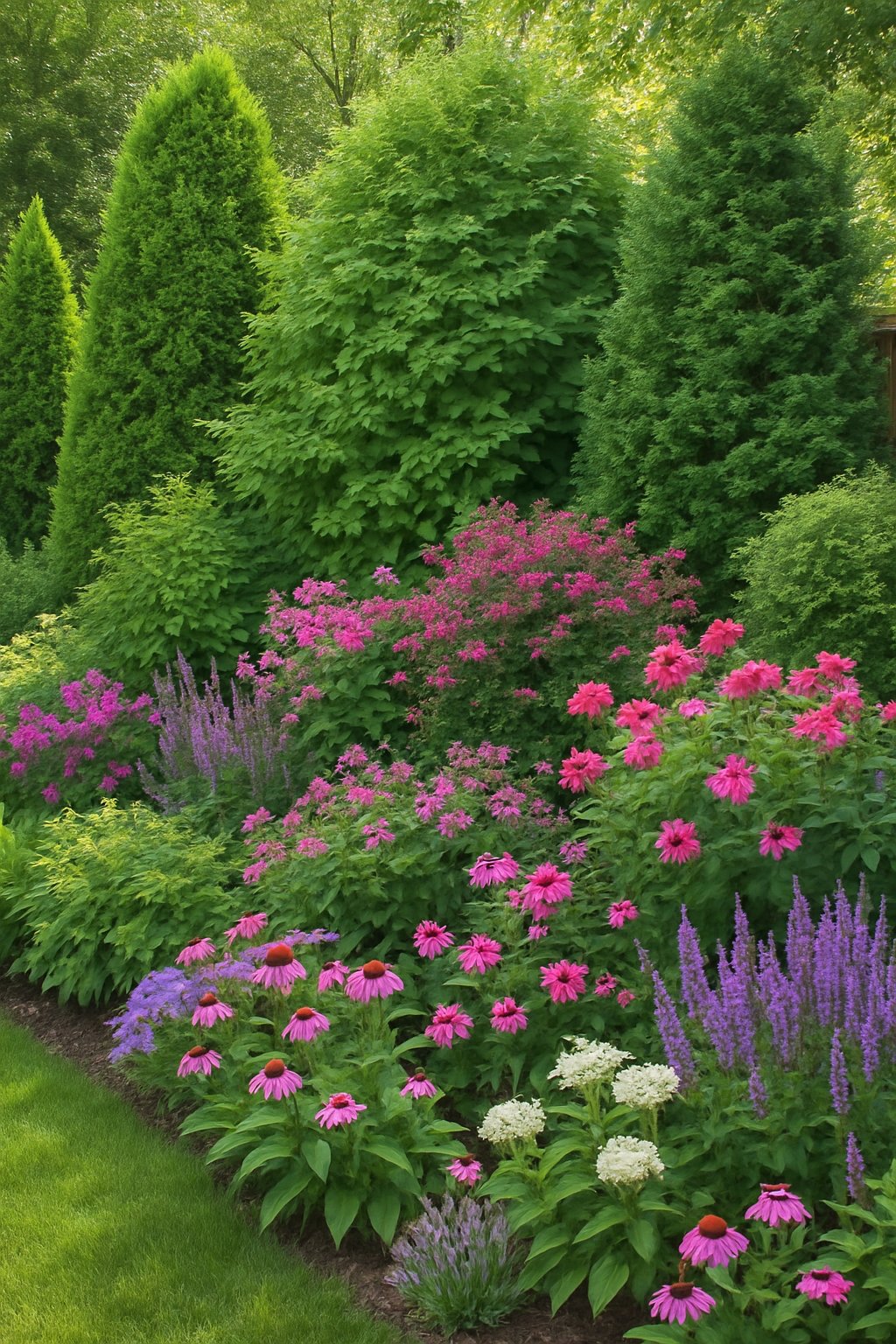
A border garden can give your yard privacy in a gentle, natural way. Planting a mix of shrubs and flowers in layers helps create a soft wall between you and your neighbors. This looks beautiful and can block unwanted views.
Choose evergreen shrubs for year-round cover. Cherry laurel and boxwood are good choices, and they stay green even in winter. Then, add medium-sized bushes or flowering plants in front. Try hydrangeas, spirea, or lavender for color and texture.
At the front, plant smaller flowers or groundcovers like hostas or creeping phlox. These fill in gaps and make your border look full. Mixing plant heights gives you better coverage and adds interest.
You can follow the shape of your yard or garden beds. Curved edges often look welcoming and help the plants blend in. If you want fast results, choose faster-growing shrubs and plant them a little closer together.
This kind of border garden can also attract birds and butterflies. It’s a calming, private space to enjoy from your porch, deck, or favorite chair. It gives you peace while helping nature thrive right outside your door.
6) Set up a garden cabana or pergola with curtains for flexible privacy.

A garden cabana or pergola can give you a quiet spot in your yard. These structures offer shade from the sun and a cozy place to relax. They also make it easier to enjoy your outdoor space with more privacy.
If you add outdoor curtains, you can control how much of your yard is visible. You can pull the curtains closed when you want more privacy, or open them to let in light and fresh air. This way, you can adjust your level of privacy during the day.
Cabanas and pergolas come in different sizes and styles. You can pick one that fits your yard and meets your needs. Some people choose simple designs, while others add lights or soft cushions for extra comfort.
Curtains made for outside use usually resist weather and dry quickly. This can help them last longer. No matter which style you choose, adding a cabana or pergola with curtains can give you a peaceful space outside while helping you feel safe and comfortable.
7) Place large potted plants around your deck or patio for quick barriers.
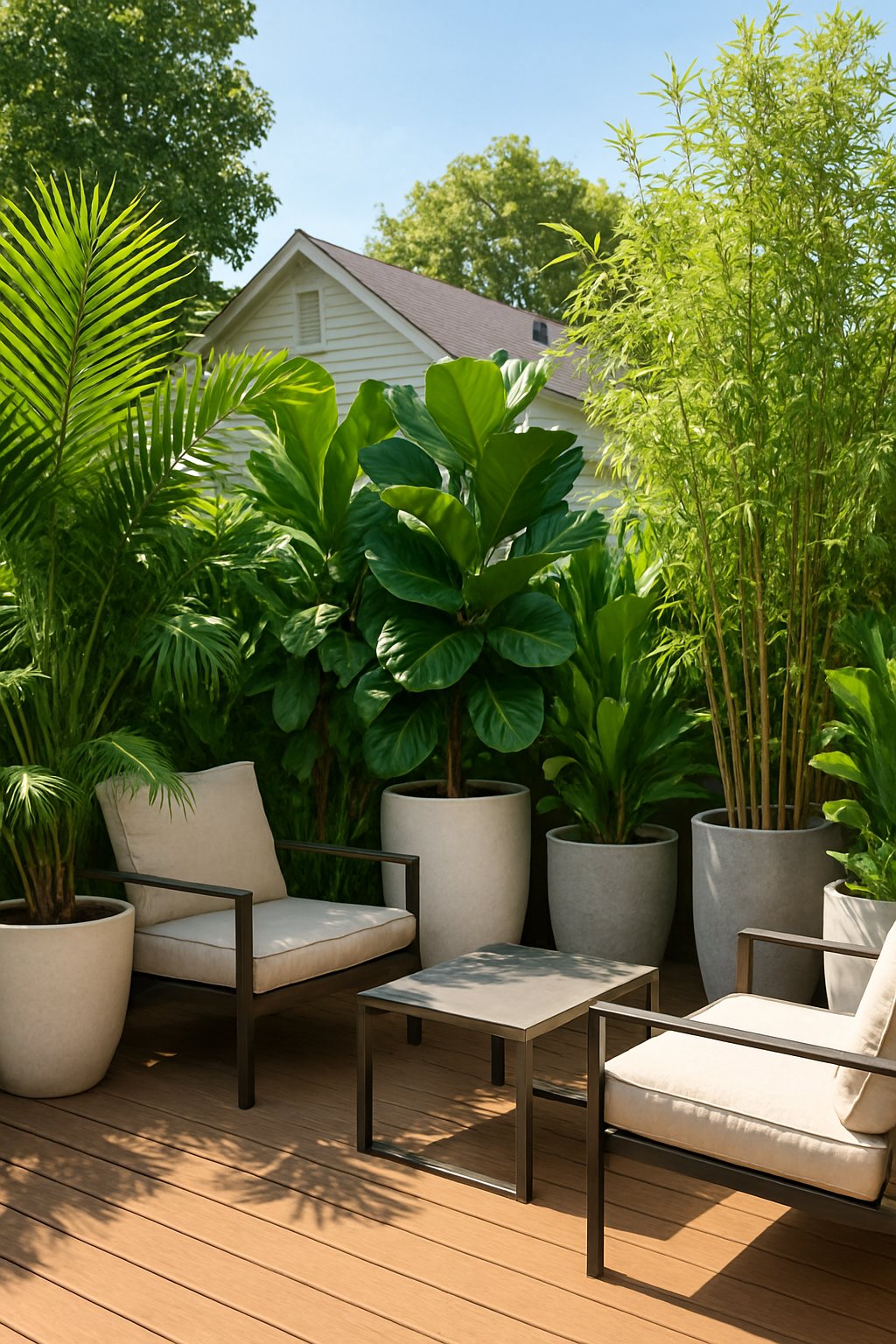
Adding large potted plants to your deck or patio is a simple way to create privacy. You can move the pots as needed, which gives you flexibility. This approach also works well if you do not want to build permanent structures.
Choose plants that are tall and full, such as bamboo, evergreens, or ornamental grasses. These plants can block views without taking up much space. For more color, include flowering plants or shrubs.
Large, heavy pots can help prevent accidents by keeping plants stable, even in windy weather. Make sure your pots are easy to move if you wish, or use pot caddies with wheels.
Caring for potted plants is often easier than caring for garden beds. You can water and trim them from a standing or sitting position. Try to pick plants that suit your climate and sunlight. This way, you can enjoy a bit more privacy and a green, peaceful space without extra effort.
Understanding Backyard Privacy
Finding the right amount of privacy in your yard can make outdoor spaces feel safer and more comfortable. Thoughtful choices help you enjoy time outside while still staying connected to your neighbors.
Why Backyard Privacy Matters
Backyard privacy gives you a place to relax, rest, and enjoy fresh air without feeling watched. Feeling secure outdoors helps you unwind, whether you’re reading, gardening, or spending time with loved ones.
Personal space also supports your independence. You can enjoy family gatherings, host friends, or simply watch birds in peace. Protecting your space from noise, pets, and stray views makes the yard feel like a true retreat.
Privacy is also important for safety. Well-placed screens, fences, or plants can help shelter kids and pets from outside distractions. Some options, like shrubs and pergolas, bring beauty as well as coverage, making your space more inviting.
Balancing Privacy With Neighborhood Connections
Seeking privacy doesn’t mean cutting yourself off from neighbors. The best solutions let you enjoy your yard while still saying a quick hello over the fence.
Choose fencing, trellises, or plantings that keep sightlines gentle, not harsh. For example:
- Low fences with tall shrubs add coverage but still feel open.
- Trellises with climbing flowers give shade and soften the view, but don’t block it completely.
Keeping a corner open or adding a bench by the edge welcomes friendly chats. Good privacy helps you feel at home while also being part of the community. This balance is often the key to feeling safe, comfortable, and connected.
Navigating Local Regulations
Building privacy in your backyard is about more than choosing the right fence or plants. Local rules and neighborhood guidelines can affect what changes you are allowed to make.
Checking Homeowner Association Rules
If you live in a community with a Homeowner Association (HOA), it’s important to learn their specific rules. Many HOAs have guidelines about the height, style, and color of fences or screens. Some HOAs also limit the kinds of plants or outdoor structures you can add.
Check the HOA handbook or contact your board before starting any backyard project. This can save you from having to remove features later or facing possible fines. Making sure your plans fit with HOA policies helps keep good relationships with neighbors and reduces stress later on.
Take note if you need written permission for large changes. HOAs may require a request form or photos of your proposed project. Following these steps early will help your project move forward smoothly.
Permits and Boundary Considerations
Many cities and towns ask for permits before you build fences, decks, or other permanent features. The rules can depend on fence height, location, and the materials you use.
Call your local building department, or visit their website, to ask about permits and property line rules. It’s important to know where your true property boundary is before adding any new structure—this may mean looking at your home’s plat map or property survey.
Building across boundary lines, even by a few inches, can cause conflict with neighbors. It can also lead to having to move or remove what you have built. Take time to double-check these details, and if needed, talk with your neighbor about your plans. This can help avoid misunderstandings and maintain a friendly relationship.

